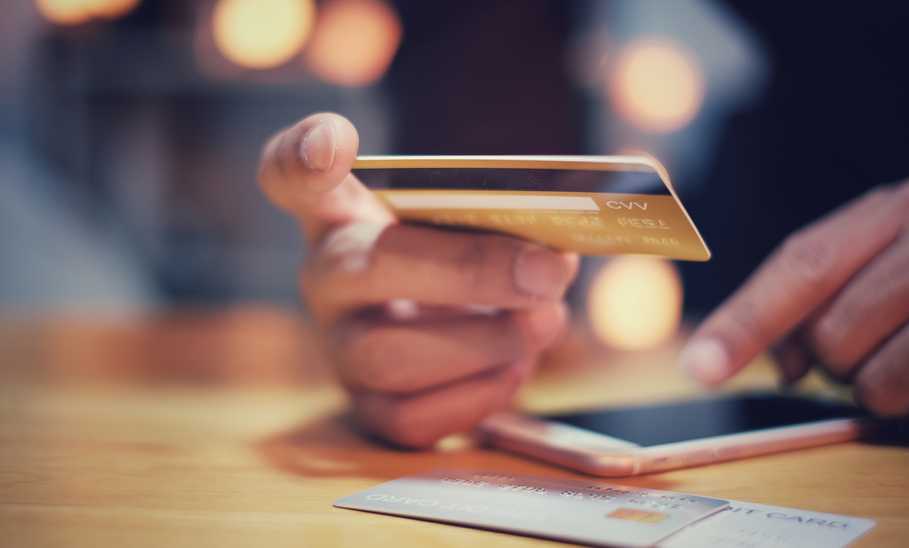Credit Card Grace Period: What It Is And How It Works

Our evaluations and opinions are not influenced by our advertising relationships, but we may earn a commission from our partners’ links. This content is created by TIME Stamped, under TIME’s direction and produced in accordance with TIME’s editorial guidelines and overseen by TIME’s editorial staff. Learn more about it.
Did you know that you can receive what essentially amounts to a short-term loan from the bank without paying a penny of interest?
That probably sounds too good to be true. But it’s possible with the best credit cards. There’s just one catch: You must pay back the money by the end of your credit card’s “grace period.”
A grace period gives you a specific amount of time to carry a balance on your credit card without being charged interest. This occurs between your statement closing date and your account’s payment due date.
Strategically employing your credit card’s grace period is in a sense a short-term, interest-free loan from the card issuer. It can come in handy when you’ve got an upcoming bill that you won’t be able to immediately pay off. And with some strategy, you can keep a balance on your credit card for more than 50 days without incurring interest.
There are a few specific things you must do to maintain access to your grace period. Let’s take a look at how to maximize a credit card grace period and learn how to keep from losing it.
Your credit card’s grace period is based on two things:
Let’s quickly review these terms to better understand how a grace period works.
Once per month, you’ll receive some form of correspondence outlining your activity during your previous billing cycle. This is sent after your account’s “closing date,” which is the last day of each billing period.
Your closing date is not necessarily the last day of the month. A billing cycle’s exact dates are up to the bank, and typically lasts between 28 and 31 days. It can fall anywhere inside the monthly calendar.
Your payment due date, on the other hand, is completely different from your closing date. It comes at least 21 days after your account closing date. During this time, you must make at least the minimum payment or your credit card will become delinquent.
A credit card grace period occurs when you completely pay off your previous statement balance by the due date. When you do this, you can carry a balance for any purchases during the next billing cycle and you won’t be charged any interest. You prove to the bank that you’re good for the money you borrow from them.
Not all credit cards offer a grace period (though most do). As the name implies, a grace period isn’t mandatory. It’s a courtesy by the bank and an incentive to use its products for your everyday spending.
If your card is issued by a major bank—such as Chase, Capital One or Citi—you have a grace period. Some cards that are less popular (issued by regional banks, for example) or designed for those with poor credit may not extend a grace period. You can check to see if your card participates by looking at its pricing and terms, which should have arrived with the card’s guide to benefits. It will be listed alongside the interest rates and interest charges.
The lack of a grace period isn't necessarily a reason to avoid a card you’re considering. If you’re in the habit of treating your credit card like a debit card, fully paying off your bill each month, you’ll never need to worry about credit card APR.
Even if your credit card confers a grace period, that doesn’t mean you’ll automatically benefit from it. There are requirements you must meet.
Again, you’ll need to pay the balance of your previous billing cycle in full by your payment due date. Your account will also need to be in good standing. For example, you can’t currently have a late payment and your account cannot be delinquent.
Finally, you won’t receive a grace period for cash advances. These immediately begin accruing interest, often at a higher rate than purchases. What’s more, you’ll be charged an additional fee for receiving a cash advance—typically 3% of your total transaction.
To be clear, your credit card doesn’t need to have a balance of zero for you to benefit from a grace period. Because your closing date and payment due date are staggered, you may always have a balance on your credit card. As long as you pay everything you owe on the previous billing cycle before your due date, you won’t incur any fees.
However, if you don’t pay your full statement balance by your due date, the credit card issuer will revoke your grace period and immediately begin charging you interest on your hanging balance as well as any new purchases you make. In other words, you won’t receive a grace period for future billing cycles until you’ve made all your payments. Depending on how big a spender you are, this could quickly translate into hundreds of dollars in fees.
Even if you’ve caught up on your payments and completely paid off your balances, the benefit of a grace period may not immediately return to your account. Depending on the credit card issuer, you might be required to make several months of on-time, full payments before it's reinstated.
While you can’t technically extend your credit card’s grace period, you can time your purchases so that you won’t be charged interest for nearly two months. You can do this by making a purchase immediately after your statement closing date. If you anticipate an especially large purchase that you’d like extra time to pay off, this can save you from being subject to sky-high APR.
Here’s how it works: If your billing cycle ends on the fifth day of each month, you can make your large purchase on the sixth day of the month. Your purchase won’t post to your statement until the following month on your statement closing date (likely the fifth day of the following month). At that point, your credit card grace period will kick in.
Remember, grace periods last at least 21 days. As long as you pay your full statement balance by the time your payment due date rolls around, you’ll pay no interest on your purchase—even though it’s been hanging for potentially 50 days or more.
Ideally, you’ll never make a purchase that you can’t afford to pay off immediately. Sometimes life gets in the way, though. If you can manage to time your purchase to be soon after your closing date, you’ll have significantly more time to throw money at the bill before your credit card APR kicks in.
Just note that keeping a large balance on your credit card will affect your credit utilization. In short, this is the amount of available credit that you’re using. If it’s high (say, more than 30%), your credit score may decrease until you lower your debt.
Just because your credit card has a balance doesn’t mean you’re accruing interest. That’s because most credit cards offer a grace period to pay off your bill. As long as you pay your statement balance in full each month by your payment due date, you will never be subject to your credit card’s high APR.
To see if your credit card offers a grace period, read the details under “interest rates and interest charges” in your card’s terms. There will be a section labeled something along the lines of “Paying Interest” or “How to Avoid Paying Interest,” which will outline your grace period.
As an example, here are the terms outlined for card_name cardholders: “Your due date will be a minimum of 21 days after the close of each billing cycle. We will not charge you interest on new purchases if you pay your entire balance…by the due date each month.”
Your grace period will be the time between your statement closing date and your payment due date.
Cash advances don’t get a grace period. They begin accruing interest immediately and commonly at a higher rate than normal purchases. You’ll also incur cash advance fees.
For these reasons, you should avoid cash advances if you can help it.
Grace periods are, without exception, at least 21 days long. Credit card issuers must legally present you with a bill no fewer than 21 days before hitting you with fees.
Depending on the issuer, you may even receive a grace period lasting up to 30 days. But expect most credit cards to stick to the low end of about 21 days.
The information presented here is created by TIME Stamped and overseen by TIME editorial staff. To learn more, see our About Us page.



